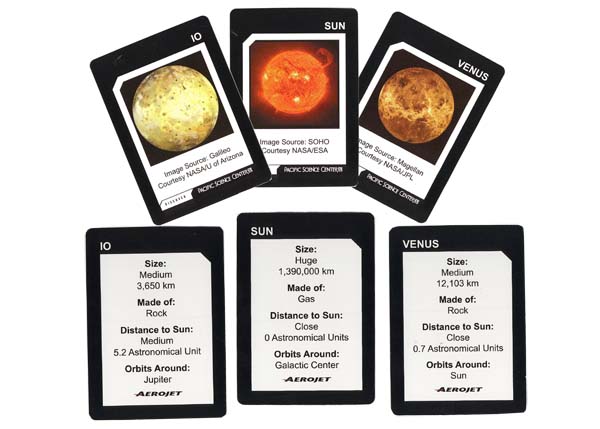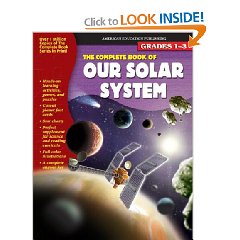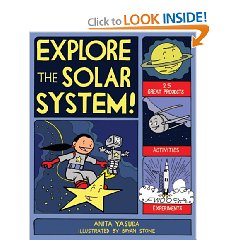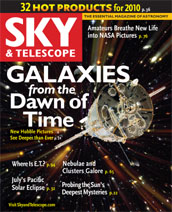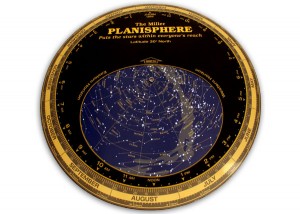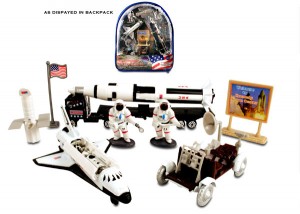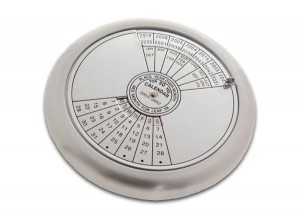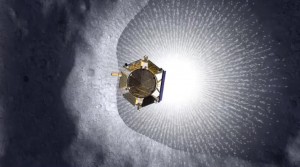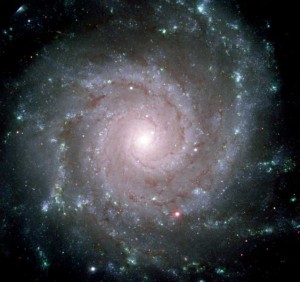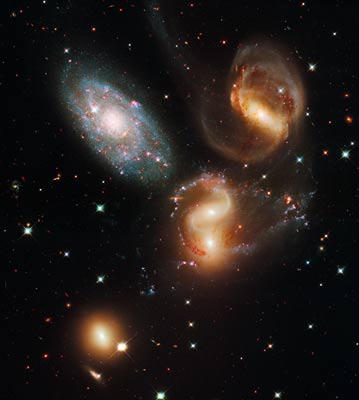Archive for the ‘Relinking’ Category
 2009 Gift Guide
2009 Gift Guide
Since you asked me for the information, here you go!
Looking for something for that little (or big) astronomer in your life? Well, if you need a little help, or feel a like the possibilities are too infinite, I’ve gathered together some of my suggestions here. You should note: you know your friends and family best so ignore my age recommendations if you like. You should note, some of this sounds like I’m just advertising what we have to offer here at Pacific Science Center. Yes, I have a vested interest in Pacific Science Center doing well, but I promise this guide includes only gifts I would actually recommend or purchase myself for my own friends.
*A number of these ideas are available at the Pacific Science Center Store. Some are online, others are not. To find the items online go to pacificsciencecenter.org and click on the store link.
First Things First
*Solar System Cards – I have to point these out, since I made them. Appropriate for many ages from beginning readers to adults, this is a full-color glossy deck of 44 objects within our solar system, and is a great way to figure out on your own why Pluto is now a “dwarf” planet. The deck is ideal for doing creative card sorts, laying out distance models, inventing games, or simply flipping through. This is not a deck of playing cards, and comes with minimal suggestions in order to inspire creative use. The cards are available exclusively through Pacific Science Center’s store. To find them on the web go to pacificsciencecenter.org, click on the store link, and search for “Solar System.” (By the way, educators, this is your last chance to get these, we won’t be doing another run!)
Membership to your local science museum or planetarium – a whole year of hands-on science exploration! This gift is perfect for a wide range of ages. Obviously, Pacific Science Center offers gift memberships starting as low as $45 – check out pacificsciencecenter.org/membership for details. Remember, a membership here gets you in to all museums participating in the Association of Science and Technology Centers Passport Program (over 290 museums!).
Books & Magazines
*Eyewitness Companions: Astronomy by Ian Ridpath, ISBN 978-0756617332 – This is a new publication of Smithsonian Handbooks: Stars and Planets by the same author. Man, this book is great. Easy to use as a reference, fun to flip through just for the fun of it, and a decent read cover-to-cover if you don’t need a narrative to take you from page to page. This is my number one recommended book whenever anyone asks me “What should I get to learn about…?” I recommend it for kids AND adults.
*The Complete Book of Our Solar System by School Specialty Publishing, ISBN 978-157768605 – I have only flipped through this book, but it is a paper-activity style book with mazes, word searches, etc. I had some of these types of books when I was little and there was always something interesting to do in them. Grades 1-3.
*Explore the Solar System! 25 Great Projects, Activities, Experiments by Anita Yasuda, ISBN 978-1934670361 – Once again, this is the first I’ve seen of good astronomy activity books so I haven’t gotten a chance to fully read through them. This one is more projects and experiments – which I find really exciting. Kids will probably need more help executing the activities in this book because they’ll need help gathering supplies, but it should be rewarding none-the-less. Ages 7-0.
Sky and Telescope Magazine – Sky and Telescope is focused more on actual stargazing and observing tools and tips. This is the magazine I subscribe to. I recommend it for high school reading level and above.
Astronomy Magazine – Astronomy is slightly more directed towards new discoveries, current research, and the physics-y side of astronomy, though it does have a good section on what’s up in the current sky. I recommend this for an adult reading level and above.
Equipment
Binoculars – Binoculars are always a better place to start than a telescope. The Meade Travelview 7×50s are a good option, though anything made by a company you’ve heard of should work well. I strongly recommend a tripod as well, though you’ll need to buy or make an adapter to get the binoculars to sit on the tripod. I recommend binoculars for ages 6 through adult.
Telescopes – Please read “What Telescope Should I Buy?”
*Planisphere – A planisphere is a starmap that is good all year round. If you’re buying one for someone who lives in another city, make sure you get one that is good for their latitude. Since it takes some concentration to learn how to use and read a planisphere, I recommend these for middle school and above. I also recommend taking it to your local planetarium and having the teacher show you how to use it.
Toys
*EarthBall (Inflatable) – I find this satellite-image based beach-ball/globe delightful. Of course, that may be because I like playing with the planets. There is something just intrinsically fun about a beach ball, and there is something just … beautiful about satellite images of our planet from space. I’m sure this says ages 3 and up since it is made of plastic and could become a choking hazard somehow, but other than that I don’t see why any age wouldn’t love this.
*Glow-in-the-Dark Stars – The little ones are best, because you can make a whole galaxy or lots of constellations in your bedroom (for people who wear glasses, like me you might want to go with bigger stars.) I have also always found the planets somewhat boring as they’re not to scale. As an added bonus, include a starmap or planisphere to help create the real constellations or the sky on a specific night. (Ages 3+ because of small parts)
*Space Shuttle Toy – One of my favorite toys when I was about four was a set including the Space Shuttle, a NASA truck, and a trailer for the Shuttle. The one we have like this at Pacific Science Center is called the “Space Shuttle Backpack Playset.” It is important to note when buying toy space shuttles – the cargo bay doors must be open and closeable – preferably with room to store something inside. At least, that was what mattered to me when I was four. People that can sit in the seats and be moved around are an added bonus. People that aren’t to scale and don’t fit in the seats are frustrating. (Ages 3+ because of small parts)
*Posters – Any beautiful astronomy poster. Hubble images are great, pictures of the whole galaxy are great. Really, if you think it is pretty and it’s a photo, it is hard to go wrong here. Posters full of little bits of information are great for the detail-studiers in your family (the ones who can always find Waldo).
“Desk” or “Grown-Up” Gifts
*50-Year Calendar/Paperweight – Sometimes called a perpetual calendar, you just spin the metal disks on this paperweight to the current year and month, and the days of the month are displayed below. Ingenious!
Earth Marble – your very own “blue marble.” There is also a collection of paperweights made by Glass Eye Studio that are very beautiful and should impress any lover of astronomy.
StarWalk – An app for the iPhone, in support of the International Year of Astronomy. This starmap app is beautiful and very well put together. It has the basic information you might want while out observing, and not so much as to be overwhelming. For users of other systems I recommend PocketStars (not as pretty, but just as useful) for Windows Mobile, and Google Sky Map (not to be confused with Google Sky) for Android.
Planisphere Watch – totally astronomy-geeky and perhaps not that useful, but this watch doubles as a planisphere.
Gifts I Recommend Against
Home Planetariums and Star Projectors – Home planetariums are cute for about an hour, but they aren’t very accurate, tend not to move appropriately, and don’t project well on a square room. Also, the constellations can be difficult to identify because the stars are all the same size.
Solar System Mobiles – I have yet to see one that’s really well made, so usually they look shoddy, and aren’t to scale in either size or distance. They couldn’t be to scale in both – but I’d like to see one that’s to scale in at least one way.
Buy/Name a Star – Unfortunately the organizations selling stars are not authorized to sell those stars, and the stars sold are often very dim and hard to find (though if you bring your map by Pacific Science Center we’ll do our best to help you out). If you’d really like to give a star, do this instead: look through a starmap and pick a bright one that’s easy to find. Make a pretty card and map of it and share this with your loved one. Together you can learn to find it, and it can be your star. You can watch for it to show up every year.
Automatic Constellation Identifiers – I’ve only used a few, and I’ve found them lacking or inaccurate. It’s more rewarding to spend the time learning to read a starmap or a planisphere and identify the constellations on your own. My thought is that the automatic constellation identifiers will end up in the “gadget” drawer, never to be used again.
Telescopes – Most telescopes that you are tempted to buy as gifts are very difficult to use, do not have good optics, and lead to more frustration than discovery. Telescopes too often end up in the closet. You can buy decent telescopes at a decent price – you just won’t see them in gift stores because they don’t “look right.” Please read “What Telescope Should I Buy?” before purchasing a telescope.
![]()
~ A l i c e !
 Links for December 2
Links for December 2
Two links for you!
Carnival of Space #131 – Starry Critters – You’ve got to see this one, not only because the title of the blog is fantastic, but also because they gave my link first billing! Whee! Check out the latest astronomy news.
Astronomy Examiner – Greg Scheiderer a friend and member of the Seattle Astronomical Society (as well as the editor of their newsletter) has begun a new endeavor for Examiner.com – He’s the Seattle Astronomy Examiner! Check out his articles for the interesting happenings in astronomy, as well as announcements of lectures and events of interest in Seattle (and surroundings).
![]()
~ A l i c e !
 Image Unveiling Celebration at Pacific Science Center
Image Unveiling Celebration at Pacific Science Center
Pacific Science Center just installed some amazing new ginormous photographs. They’re right outside the planetarium, beside the Gemini Capsule. Our public unveiling of these images will be Wednesday, November 18th at 10am.
The images we’re putting up are a celebration of the International Year of Astronomy from three of NASA’s Great Observatories, and we’re launching a full morning of fun celebrating everything space-y! There will be fun space exhibits from Science on Wheels, science experts on hand, and free planetarium shows … not to mention the pictures themselves.
I have a number of free passes good for that morning: e-mail me at alice_enevoldsen (at) pacsci.org if you’d like some for you and your friends. See you there!
A tantalizing hint:
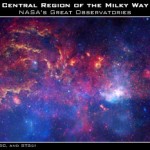
The Center of our Galaxy
![]()
~ A l i c e !
 Video: 2012 and Lecture: The Moon
Video: 2012 and Lecture: The Moon
Did you miss my little chat plus Q&A on 2012? Lucky you – KCTS recorded it and you can watch it here!
P.S. Don’t miss the lecture at the Pacific Science Center tomorrow (Thursday) night by Andrew Chaikin.
![]()
~ A l i c e !
 Carnival of Space #124
Carnival of Space #124
We are All in the Gutter, Looking at the Stars is hosting this week’s Carnival – which is about a lot of different things, since all the Mercury and Moon kerfuffle happened last week.
![]()
~ A l i c e !
 LCROSS Impact
LCROSS Impact
There are two important Moon stories that have happened or are happening in the current couple weeks. They range from exciting (confirmation of the discovery of water on the Moon) to super-exciting (we’re going to slam a spaceship into the Moon on Friday).
Story 1: The Near Future – LCROSS
On Friday October 9, 2009 (4:30am PST) NASA’s LCROSS spacecraft will separate into two parts (the “Centaur” followed by the “shepherding” observing spacecraft) and both will slam into a crater on the Moon, kicking up a plume of material big enough to be seen from Earth with 10- 12-inch telescopes. NASA has requested that astronomers (amateur and professional) observe the plume if possible to help out with the science of the mission. This is one of only a few NASA missions I know of to actively seek the participation of amateurs. Awesome.
This video gives a good look at what is going to happen: LCROSS Impact Animation from NASA
We want to see that plume get large enough to be lit by the Sun, which will cause ice (water), hydrocarbons, and carbon-compounds to vaporize and become more detectable.
Some useful statistics from NASA:
- The first spacecraft to impact is “about the weight of a large SUV, and will impact the Moon at over 9,000 km/h (5,600 mph).”
- The crater it makes will be “about 1/3 of a football field wide and about the depth of the deep end of a swimming pool.”
Story 2: The Recent Past – H2O
While we’re on the topic of the Moon – a couple weeks ago we got pretty good confirmation of water on the Moon at the end of September. Three separate spacecraft confirmed this: Chandrayaan-1, Deep Impact, and Cassini. How much water? That depends on a lot, but so you have something to give out: Emily (of the Planetary Society) says, “10 to 1000 parts per million. This is not a lot. The very highest number corresponds to one liter of water in one ton of lunar rock.”
Where’d I Get My Info?
LCROSS
http://lcross.arc.nasa.gov/impact.htm
http://www.nasa.gov/mission_pages/LCROSS/main/index.html
Where to look on Friday morning!
Water on the Moon – Read Emily’s Posts
http://www.planetary.org/blog/article/00002117/ – Part 1
http://www.planetary.org/blog/article/00002118/ – Part 2
![]()
~ A l i c e !
 Carnivals #121-123
Carnivals #121-123
Carnival of Spaces! Check them out to get your dose of Astronomy.
#121 – Hosted by Next Big Future!
#122 – Hosted by Cumbrian Sky!
#123 – Hosted by Weird Warp! (They even mention this little blog)
![]()
~ A l i c e !
 September-October Sky 2009
September-October Sky 2009
September-October 2009 Starmap
(With an activity! If you complete it, you should send me a photo of yours, I’d love to see them!)
Notable Sky Objects
HEY ALICE! I SAW …
In every season’s sky there seems to be an object that is spectacular enough that people come up to me saying “Hey Alice, last night I saw…” I guess it is a little rude of me, so I apologize, but I can usually interrupt the sentence at this point and tell them what it was – which makes me seem almost psychic. Well sorry, but it isn’t magic, its pattern recognition. After three people have asked me about the same object, I naturally assume the next few will be asking about the same thing. I love supporting people’s excitement about the sky, and I love it that you come to me to ask what you saw – so keep it up, but just in case you want to make a guess for yourself first (or impress your friends), this season’s “Hey Alice!” object is the spectacular and bright Jupiter.
JUPITER
Jupiter will be highly visible most of the night in September and October. It will be rising in the Southeast, near the constellation Capricorn. If you pull out some binoculars and steady yourself against something, you should be able to pick out the moons of Jupiter, just like Galileo did.
MERCURY and SATURN
Mercury and Saturn are too near the Sun from our point of view to be easily visible. You might catch a glimpse of Saturn in the early morning in very late October near the eastern horizon.
MARS and VENUS
In early September: Mars is rising about 1am in Gemini, and Venus is rising around 4am in Cancer.
In late October: Mars is rising a little after midnight in Cancer. Venus will not be visible.
EVENTS
September 30 – MESSENGER makes its third flyby of Mercury, and soon after that there will probably be some awesome new photos of this tiny, hot, rocky planet.
October – Don’t miss The Halloween Show in the Willard Smith Planetarium at Pacific Science Center. We’ll be bringing back the newly spookified version of the historical astronomical connections to our modern candy-riffic holiday. It will be weekends at 2:30 – you can get tickets at our ticketbooths or online.
CARNIVALS OF SPACE
I’ve missed a few, but you shouldn’t. Check out #112, #113, #114, #115, #116, #117, #118, #119, and #120!
New Constellations
A recent survey of attendees of the Willard Smith Planetarium suggested that visitors would like to hear even more about current science and new discoveries. I still want to tie that back to the constellations we’re viewing whenever possible, so in this bi-monthly Sky Update I have attempted to share a piece of current science that can be associated with each constellation. I haven’t succeeded, I only found time to put in 3 things but they’re pretty cool, and I’ll keep building on this.
PISCES – The Fish
SCIENCE: M74 is one of the most beautiful face-on spiral galaxies I have ever seen.
MYTH: We often use the loop at the end of Pisces as the wings of Pegasus. Technically, these stars are in Pisces – but it sure helps to see Pegasus as a winged horse.
Returning Constellations
AQUILA – The Eagle
CURRENT: NASA’s new moon lander will be called Altair – after the brightest star in Aquila. Neat that it is a star in the constellation of the Eagle, when the first lander that landed on the Moon was also called the Eagle.
ANDROMEDA – The Princess
PERSEUS – Perseus
PEGASUS – The Flying Horse
CURRENT: On September 9th (2009) Hubble released four new images taken after the last servicing mission. They are breathtakingly beautiful as usual – but the one of Stephan’s Quintet was taken while Hubble was pointed at the constellation Pegasus. This is a great opportunities to talk about types of galaxies, interacting galaxies, or the size of the universe.
CAPRICORNUS – The Sea Goat
DELPHINUS – The Dolphin
LYRA – The Lyre
CYGNUS – The Swan
CURRENT: NASA’s Kepler mission (looking for Earth-like planets around other stars) is pointed at Cygnus, and will stay pointed between Cygnus and Lyra for the duration of its mission.
BOÖTES – The Herdsman
HERCULES – Hercules
CORONA BOREALIS – The Northern Crown
CEPHEUS – King Cepheus
DRACO – The Dragon
URSA MAJOR – The Great Bear
URSA MINOR – The Little Bear
CASSIOPEIA – The Queen
“Tiny” Guys
Going for the Gold? Here’re this month’s itty-bittys.
ARIES – The Ram
AQUARIUS – The Water Bearer (not that small, but not on our map)
PISCES AUSTRINUS – The Southern Fish
MICROSCOPIUM – The Microscope
SERPENS – The Serpent
SCUTUM – The Shield
VULPECULA – The Fox
SAGGITA – The Arrow
EQUULEUS – The Horse
CAMELOPARDALIS– The Giraffe
LACERTA – The Lizard
TRIANGULUM – The Triangle
LYNX – The Lynx
Wondering where I’ve been? Yeah, sorry about that. There was this grant, this major project, and this conference. I’ve gotten sick of seeing apologies for not posting all over the internet though, they remind me too much of the permanent “Under Construction” labels and animated gifs that were so prevalent on the web in the 90s. They aren’t usually interesting, I want to hear what the bloggers I follow really have to say, not that they’re sorry for not posting. So, I am actually sorry, and I hope I haven’t lost too many of you with such a long break, but I’ve hidden that apology down here at the bottom so you aren’t subjected to it if you don’t want to read it. :) Clear skies to you – or at least clear internet skies if you live somewhere with 200 days a year of cloudcover …
![]()
~ A l i c e !
 Some Links
Some Links
Life comes in waves – busy waves, and waves when you have lots of time to blog. You get one guess which wave I’m in now.
Meanwhile, I will leave you with some good links.
1. There is another Alice! Not only that, there is another Alice involved in informal astronomy education. Not only THAT, there is another Alice in the Pacific Northwest who is highly involved in informal astro ed. So, if you’re looking for Alice’s Astronomy a Go Go … you’re in the wrong place, you’re at Alice’s AstroInfo. But you should definitely head over there and check out her podcasts, she’s got some neat stuff.
2. Carnival of Space #112: Out of the Cradle celebrates the Moon Landing
3. Carnival of Space #113: Dynamics of Cats hosts one all about extraterrestrial impacts
4. Carnival of Space #114: Ultra Cheap, from Cheap Astronomy
And don’t miss Kepler’s announcement of their proof of concept: http://kepler.nasa.gov/press/earlyresults.html
![]()
~ A l i c e !
 Carnival of Space
Carnival of Space
21st Century Waves has this week’s Carnival of Space – #111! It is a celebration of the anniversary of the Apollo 11 launch! Woo!
Also, for celebrating the Moon landing, We Choose the Moon might be cool.
